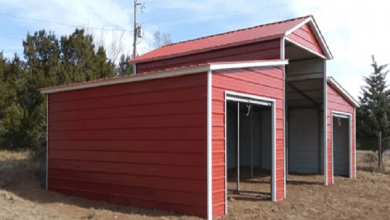
Understanding Reverse Mortgages
A reverse mortgage is a loan option that allows homeowners—typically seniors aged 62 and older—to access their home equity without having to sell their property or make monthly payments. Unlike traditional home equity loans or lines of credit, a reverse mortgage provides funds based on the home’s value, and repayment is deferred until the borrower sells, moves out, or passes away.
There are different types of reverse mortgages, including:
- Home Equity Conversion Mortgage (HECM) – The most common type, backed by the Federal Housing Administration (FHA).
- Proprietary Reverse Mortgage – A private loan offered by financial institutions, not insured by the government.
- Single-Purpose Reverse Mortgage – A niche product typically provided by non-profits or state/local governments for specific uses like home repairs.
While HECM loans are popular, Non-FHA Reverse Mortgage Solutions for Unique Needs – such as proprietary reverse mortgages—are gaining traction as a better alternative in many situations. Let’s explore why.
What Is a Proprietary Reverse Mortgage?
A proprietary reverse mortgage is a loan offered by private lenders without government insurance. These loans are often designed for homeowners with high-value properties who want to access a larger portion of their equity than a federally backed reverse mortgage allows.
Unlike HECMs, which are subject to FHA-imposed borrowing limits, proprietary reverse mortgages have higher loan amounts and more flexible terms. They are particularly useful for homeowners with homes valued above the HECM lending limit (currently $1,149,825 in 2024).
Why a Proprietary Reverse Mortgage Can Be a Better Option
1. Higher Loan Limits
HECM loans are subject to federal caps, meaning that even if a homeowner’s property is worth significantly more, they can only borrow up to a certain amount. Proprietary reverse mortgages, on the other hand, are not restricted by federal limits, allowing high-net-worth homeowners to unlock more equity.
For example, if a home is worth $2 million, a proprietary reverse mortgage may allow the homeowner to access a loan far beyond the FHA-imposed cap, making it a superior option for those with valuable properties.
2. No Mortgage Insurance Premiums (MIP)
Since proprietary reverse mortgages are not backed by the FHA, borrowers do not have to pay mortgage insurance premiums (MIP). HECM loans require both an upfront MIP and annual MIP costs, which can make them more expensive. This cost-saving aspect makes proprietary reverse mortgages an attractive alternative.
3. More Flexibility in Payout Options
While HECMs typically offer structured payout plans (lump sum, line of credit, or monthly payments), proprietary reverse mortgages often provide more customized payout options. Some lenders allow borrowers to choose unique hybrid payout structures that fit their financial goals better.
4. Available for Younger Borrowers
Most reverse mortgages, including HECMs, require borrowers to be at least 62 years old. Some proprietary reverse mortgage programs allow younger homeowners—sometimes as young as 55—to access their equity earlier, making it a more versatile option.
5. Ideal for High-Value Homes
For seniors who own luxury homes or properties in high-cost areas, a proprietary reverse mortgage makes the most sense. Traditional HECMs do not reflect the true value of luxury homes, while proprietary reverse mortgages offer loan amounts that align with property values.
For instance, if you own a $3 million beachfront home, HECM will cap your borrowing potential based on FHA limits. A proprietary reverse mortgage, however, can provide significantly more funds.
When a Proprietary Reverse Mortgage is the Best Choice
A proprietary reverse mortgage is ideal if:
- You own a high-value home that exceeds HECM limits.
- You want to maximize the amount of home equity you can access.
- You do not want to pay FHA mortgage insurance premiums.
- You are under 62 and need an option that allows earlier access.
- You prefer more flexibility in how you receive your funds.
Things to Consider Before Choosing a Proprietary Reverse Mortgage
Before proceeding, consider the following:
- Interest Rates & Fees – Since proprietary reverse mortgages are private loans, rates and terms vary by lender. It’s crucial to compare options.
- Repayment Terms – Like all reverse mortgages, the loan is repaid when the homeowner moves out or passes away. Be sure to understand the terms to avoid surprises.
- Alternative Options – If you don’t need a large sum, a home equity loan or HELOC may be a better option.
- Impact on Heirs – Since a reverse mortgage reduces home equity, it’s essential to discuss the decision with family members who may inherit the property.
Conclusion
A proprietary reverse mortgage offers a more flexible and higher-value alternative to traditional reverse mortgages, especially for homeowners with expensive properties or those looking to maximize their home equity. With higher loan limits, no mortgage insurance costs, and more payout flexibility, it can be a better option than a standard HECM or other equity-based loans.
Before making a decision, compare lenders, evaluate your financial needs, and consult with a financial advisor to ensure a proprietary reverse mortgage aligns with your long-term goals.




